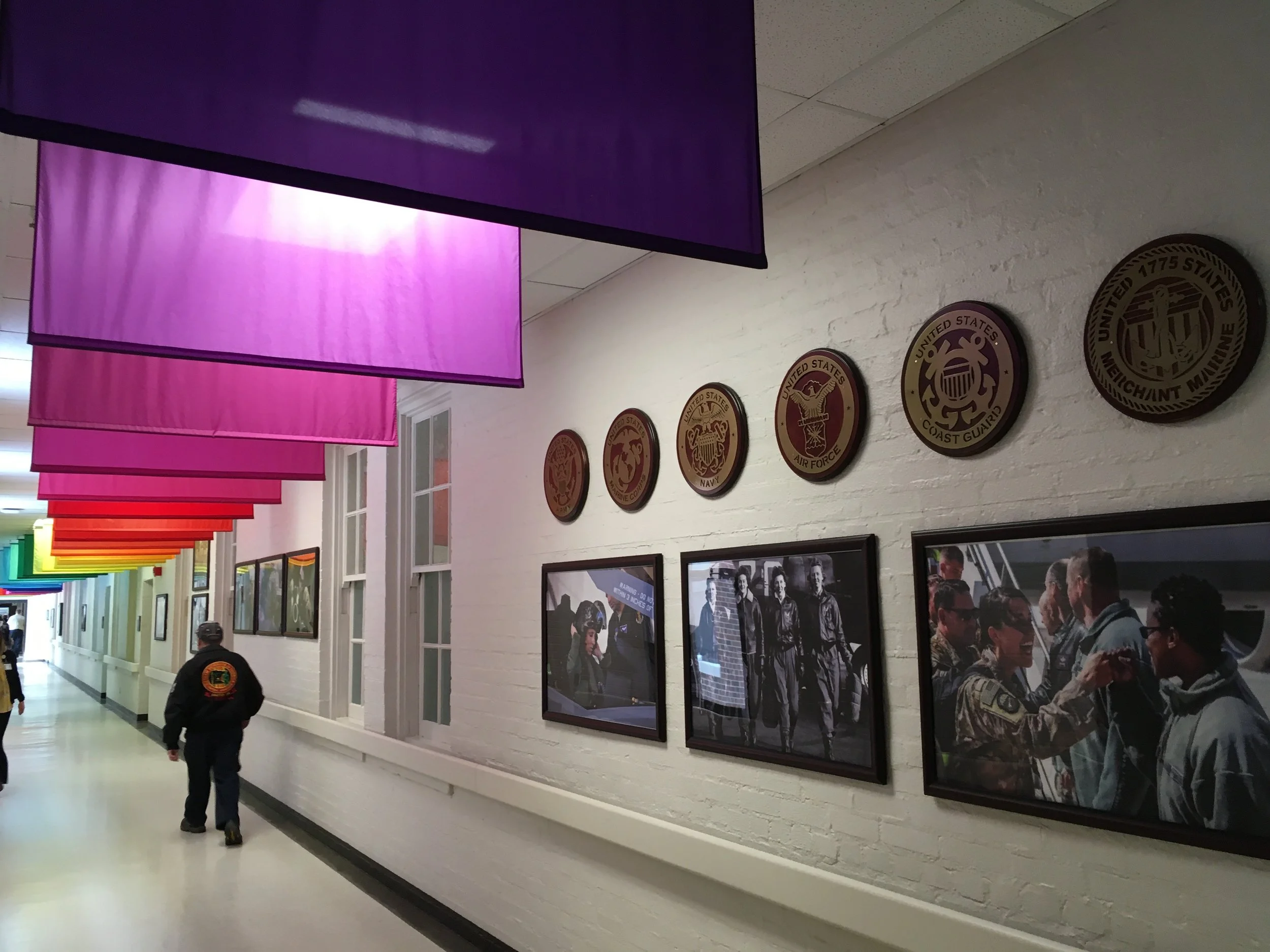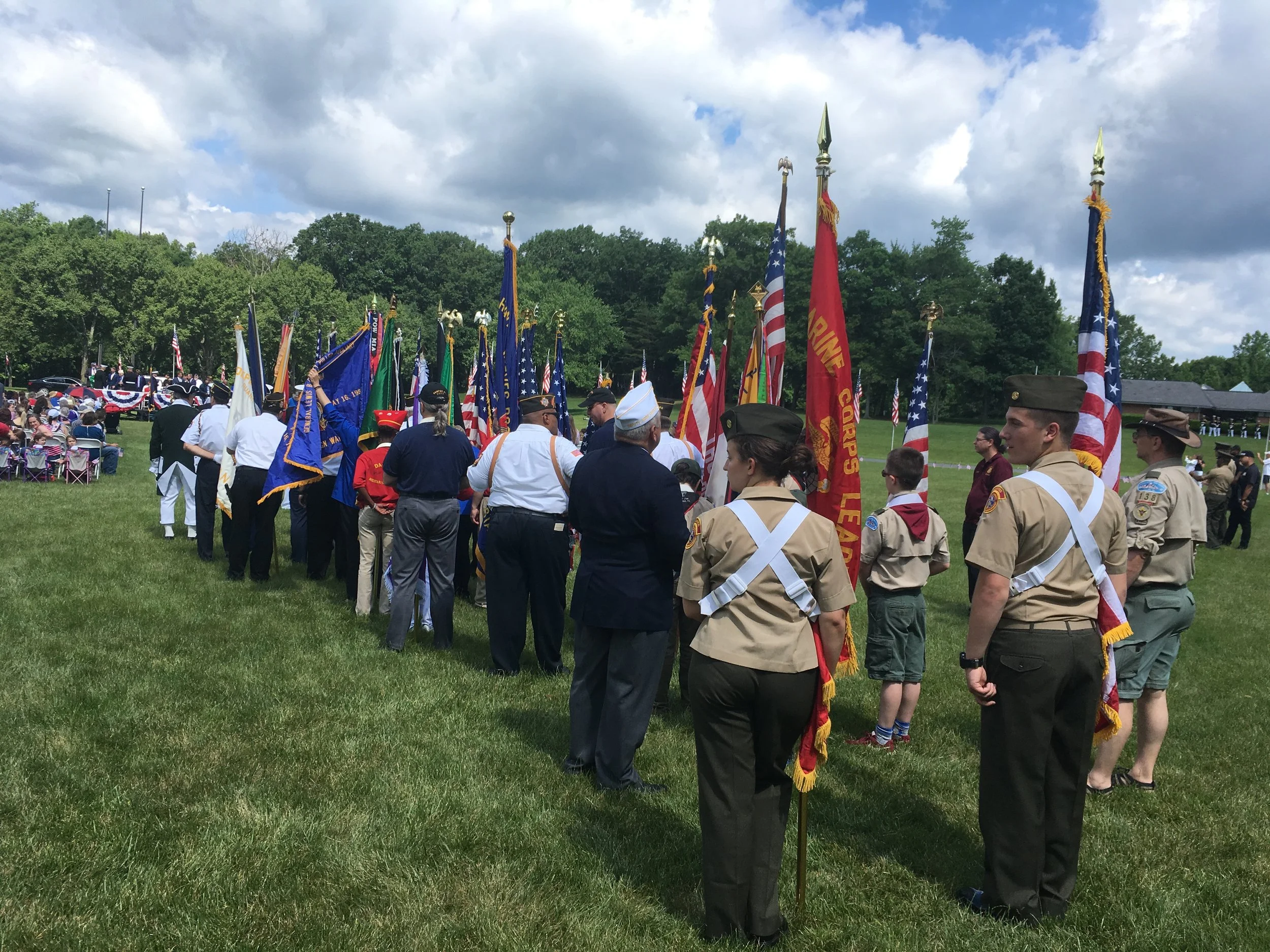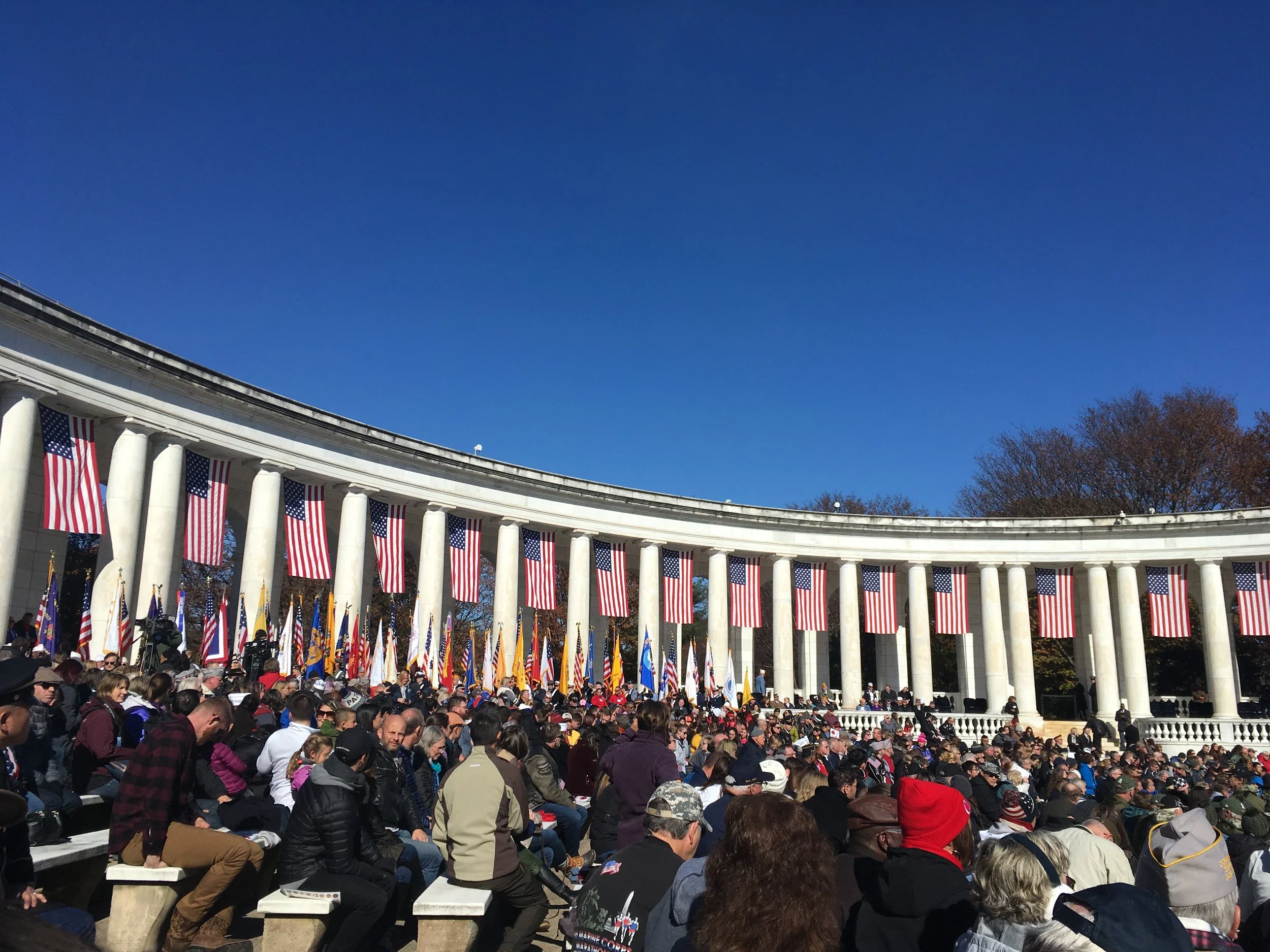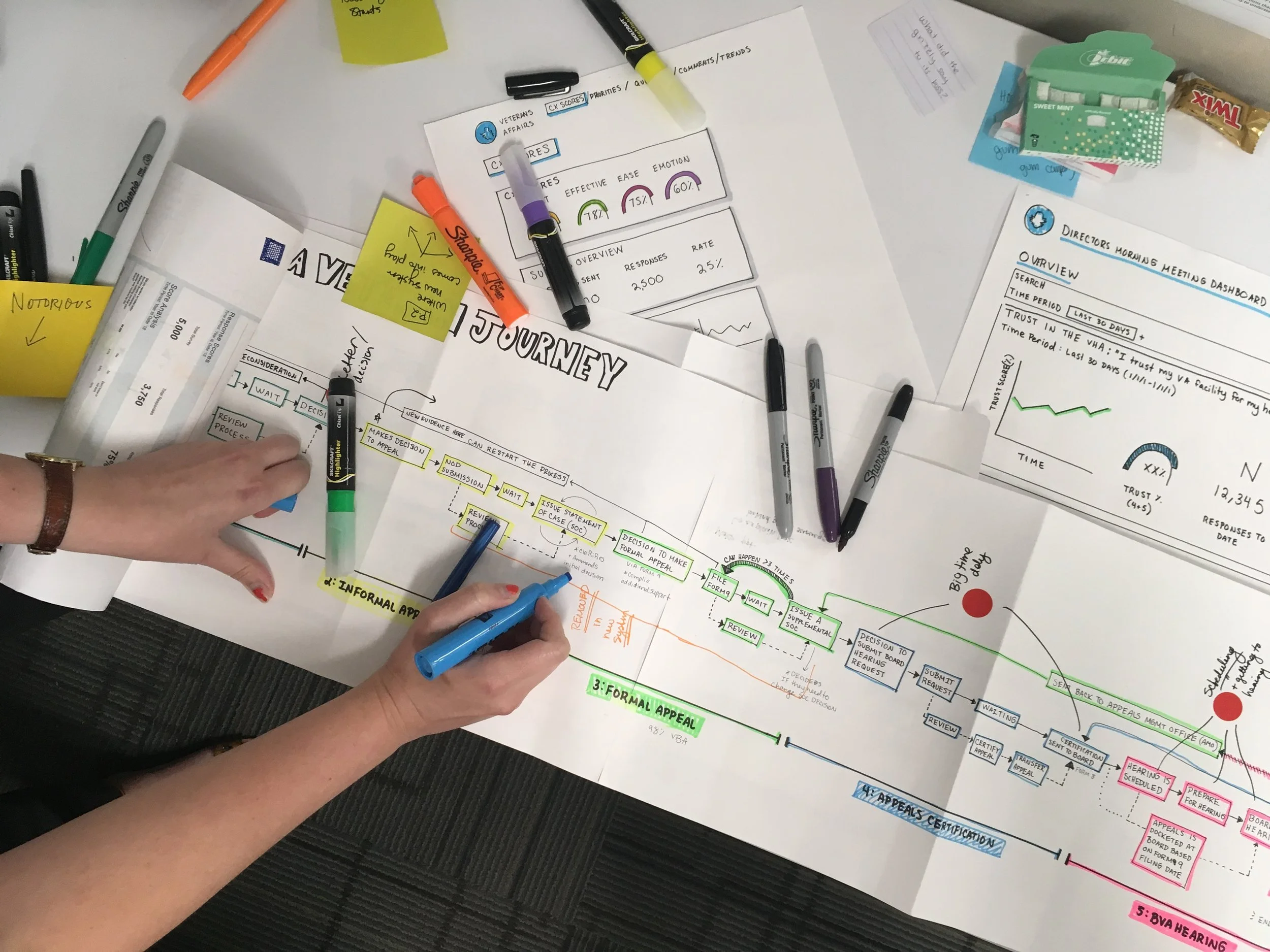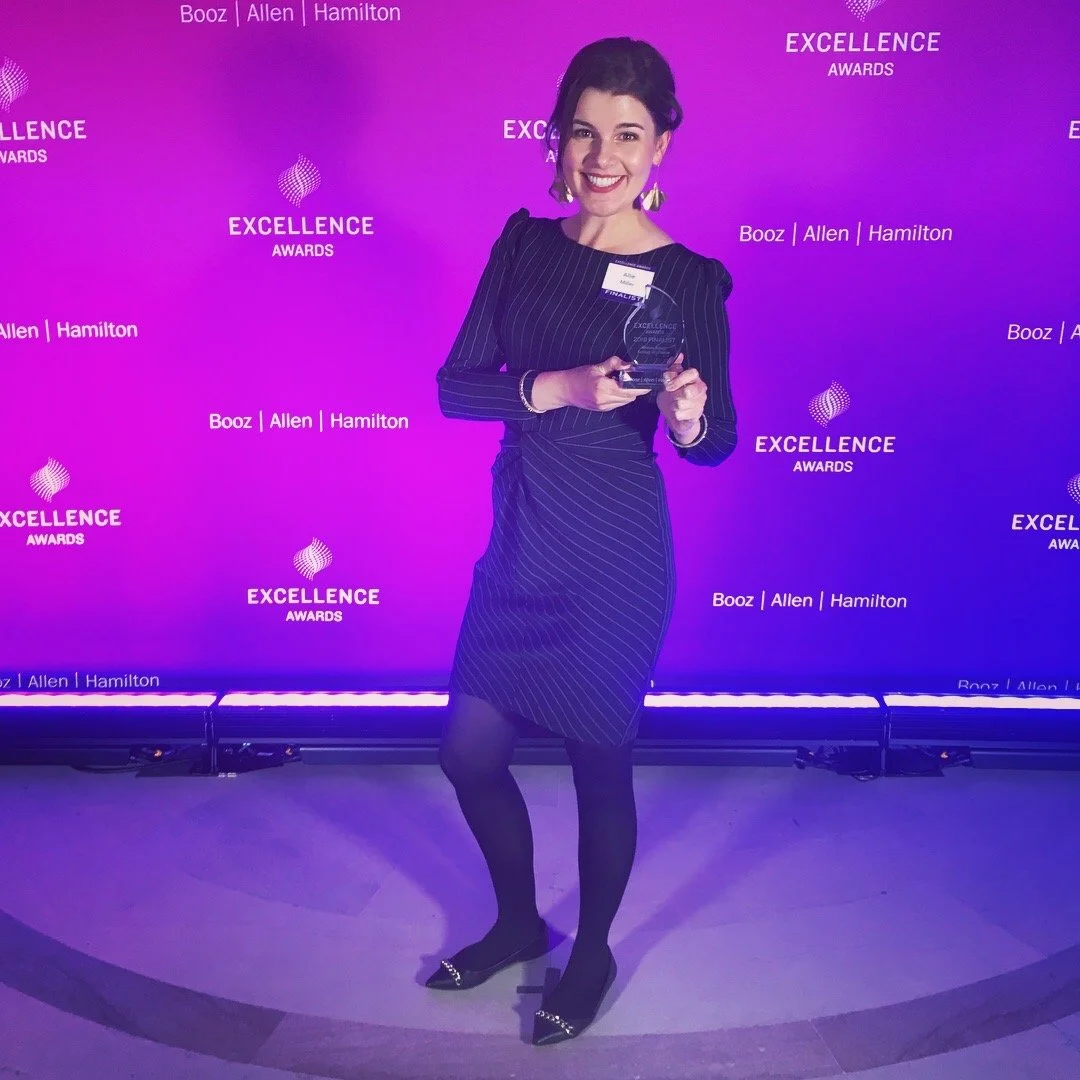VA Veterans Experience Office
Bridging human centered design and artificial intelligence to build a sustainable customer experience program centered in the experience of Veterans, their families, caregivers and survivors.
Client: U.S. Dept of Veterans Affairs, Veteran Experience Office (VEO) on behalf of Booz Allen Hamilton
Awards: Booz Allen Hamilton Excellence Award (2019)
About the VA Veterans Experience Office
Founded in 2016, the VA Veterans Experience Office aims to “To leverage customer experience (CX) data, tools, technology, and engagement to enable the Department of Veterans Affairs (VA) to be the leading customer experience organization in government, so service members, Veterans, their families, caregivers, and survivors choose VA.” From 2018 to 2019, I co-led a team of nearly 40 designers, data scientists and technical experts focused on blending Artificial Intelligence (AI) and Human Centered Design (HCD) to better understand and improve the Veteran Experience. This work was done while serving as a third-party contractor in support of the VA. We leveraged novel techniques in natural language processing (NLP) and a qualitative design research in the field about Veterans, their families and VA employees to build best in class customer experiences.
Building a Scalable CX Operations
Over my 2 years supporting the VA VEO, I co-managed a creative portfolio of over 20 unique lines of business (LOBs) across the VA’s VHA, VBA, NCA, Appeals, and Enterprise Services leveraging skills that included but were not limited to ethnographic research, design synthesis, digital prototyping, user testing and design facilitation. Underpinning this work was the creation of a scalable, and repeatable framework for applying HCD across the VA’s complex range of services. In addition, I supported the development of the VA’s CX measurement platform — Veteran’s Signals — and early strategy that served as a model for future CX mandates throughout the federal government.
Scoping and Literature Research
Aligning Research Goals to Partner Objectives and Resources
Before beginning any new project, we conducted thorough scoping sessions through 1:1 conversations and staff workshops to ensure our research goals alined to the needs, resourcing and measurement objectives of the partner office.
Learning from Existing Insights
Once a scope was in place, we would begin with a thorough review of existing literature and trend research in the related field. We would explore past design research, agency reports, industry trends and what could be learned from adjacent industries.
Bringing Research to the Field
To prepare for visits, we developed field guides and research protocols comprised of qualitative and qualitative methods. Tools used included but were not limited to: contextual inquiry, group and solo interviews, card sorting, ideation workshops, blueprinting, field observation and tours, participatory design. We then deployed these methods across the country, traveling to VA Hospitals and clinics, memorial sites, benefits offices and Veteran Service Organizations (VSOs). We sought to meed the customer where they were, being invited into the homes of Veterans, their community and the systems that supported them. Getting to speak to this community at ER bedsides, moments of remembrance, and celebrations of honor were privileged experiences.
Research Synthesis & Concept Ideation
Defining the Moments that Matter
Following a series of site visits for each project, the design team would pool our raw insights and conduct extensive synthesis sessions. Using tools like affinity mapping and clustering we developed multilayered customer journey maps and service blueprints. These journey maps highlighted the key pain points, bright spots and moments that matter most in the customer journey. These artifacts were paired with comprehensive research reports, customer personas and actionable insights to build new solutions off of.
Turning Insights into Action
Prioritized insights and customer journeys then became the spring board for solution ideation and development. Through both internal and participatory sessions, we developed a vast range of prototypes spanning digital products, service delivery and organizational management. We sought to bring forward concepts that could be implemented on both short and long term horizons, and sought to impact front facing and back-facing customer audiences. Though customer testing and design refinement, we would evolve post-it note ideas into high fidelity concepts validated but user feedback and customer testing. Deliverables would include feasibility assessments, and product road maps for further refinement.
Building a Customer Measurement Framework
Underpinning each project was the delivery and deployment of a customer experience survey aligned to the Moments that Matter uncovered in research synthesis. A targeted and streamlined survey was developed for each project housed under the enterprise called Veterans Signals. Survey’s consisted of at least 7 questions aligned to the 7 drivers of customer experience: effectiveness, ease, efficiency, equity, employee helpfulness, trust and satisfaction. In addition, an open text response option would allow customers to provide unstructured data that was analyzed with AI techniques like natural language processing (NLP) for topic modeling and insight reporting. Survey results were configured and visualized with Medallia’s customer experience platform.
Creating a Legacy of Impact
Over the two years I supported the VA VEO, I proud to help contribute to the office’s foundation. Since leaving, continued efforts led to the expansion of this important work and a lasting legacy of impact to the lives or Veterans, families, caregivers, survivors and staff.
01
Identifying Life-Saving Insights
One outcome was the ability to detect free-text responses suggesting a veteran was at risk of suicide, homelessness, or other risk factors. These responses were automatically flagged for review by VA staff who forward cases to the Veterans Crisis Line and National Call Center for Homeless Veterans.
02
Agency Wide Adoption
Veterans Signals became a customer measurement tool that was deployed across the VA and to each of it’s administrations (VHA, VBA, NCA, Appeals). To date, these surveys have been deployed to over 16 million customers and has measured a 20% Increase in Veteran trust.
03
Federal Standard CX Measurement
In 2019, the VA VEO was recognized as a federal model for how high impact service providers (HISPs) were to measure the customer experience through OMB A-11 280 Circular. It became the benchmark for other civilian agencies, and continues to be the standard today.


